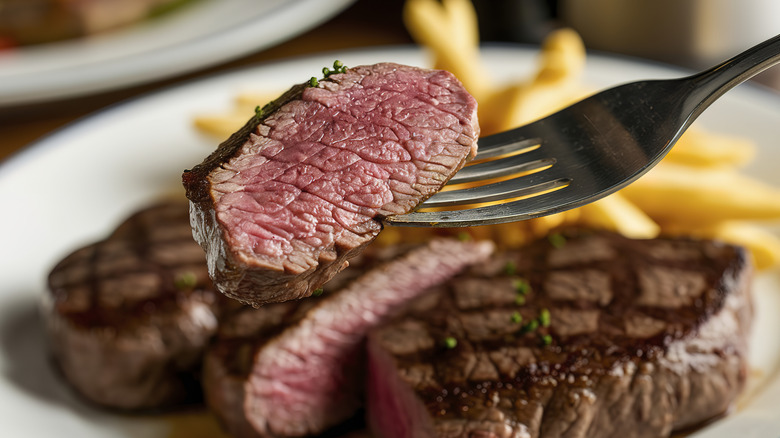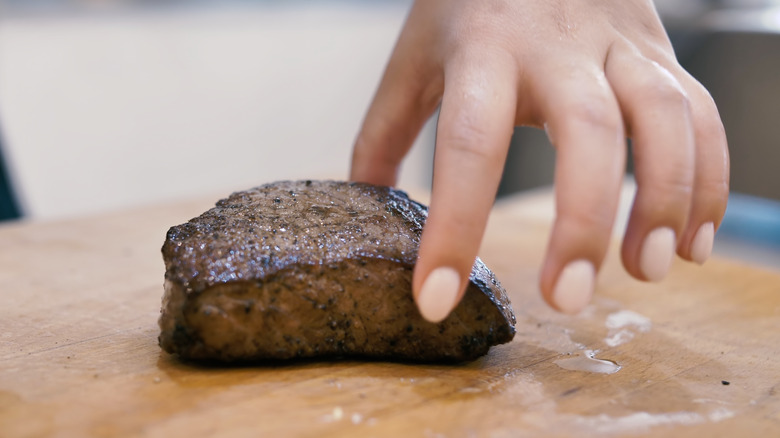Can You Actually Tell If Your Steak Is Done Just By Poking It?
When it comes to cooking steak, timing and temperature are everything — but instinct also plays a role. Many of us are taught to rely on timers, meat thermometers, or even slicing into the center to check for doneness. While these tools and methods certainly have their place, many seasoned chefs, including Jon Wood (director of culinary at Lawry's Restaurants, home to The Prime Rib and Tam O'Shanter in LA) swear by another intuitive technique: the poke test. According to Wood, "Yes, absolutely," you can determine the doneness of a steak simply by touching it.
Also known as the fingertip-to-thumb test, touch test, or hand method, the poke test works by comparing the firmness of a steak to your palm. Here's how: First, gently press the fleshy pad below your thumb with one or two fingers of the opposite hand. That soft, springy resistance is what a rare steak should feel like.
Now, touch your index finger to your thumb and press the same area with your other hand's finger(s). That's what medium-rare feels like. Then, try middle finger to thumb. That's medium. Ring finger to thumb — medium-well. Pinky to thumb — well-done. With each finger progression, your palm becomes firmer, mirroring the way protein fibers contract as steak cooks.
The poke test is a (mostly) reliable approach to checking steak doneness
Keep in mind, though, that the poke test is not a one-size-fits-all solution. It works well with thinner cuts of beef such as ribeye and New York strip, which tend to cook more evenly throughout.
"It's hard to gauge with thicker cuts of beef," chef Jon Wood notes. Those like filet mignon and tomahawk can be deceptive. Even if the outer surface feels done to the touch, the unseen center could be lagging behind. In this case, using a meat thermometer is the best way to ensure accuracy.
The more often you cook steak and pay attention to how it feels at each stage, the more confident and connected you'll become. "It comes with a lot of practice and experience," says Wood. "The fingertip-to-thumb test is always a great reference or guideline." Over time, you'll begin to literally feel the difference between a steak that's ready to eat versus one that may need another minute or two on the heat.

